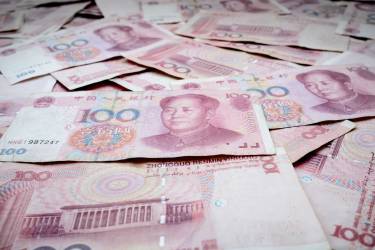The escalation of the trade war between China and the U.S. has motivated the People’s Bank of China (PBOC) to make an unprecedented move, raising the USDCNH reference rate above 7.20. Investors had viewed this level as a symbolic threshold for the stability of the Chinese currency. However, the latest plans to further support exports and liquidity in the stock market have shifted expectations for the official rate to above 7.30.
USDCNH returned to consolidation despite continued announcements of potential monetary policy easing in China. Source: xStation5
Trump and China’s Internal Struggles
The latest round of the “tariff ping-pong” was, for China, a trial of honour. Within just one week, the entire trade flow with the U.S. was subjected to tariffs exceeding 100%, and Beijing did not back down from Trump’s moves, even though it arguably has more to lose, especially in the short term.
Recent data confirms persistent deflation, which highlights the core issue of the Chinese economy in recent years—weak domestic demand. Exports have served as a lifeline for production in need of buyers. However, the productivity of Chinese manufacturers could soon result in increased deflationary pressure, as excess supply gets blocked by tariffs at Chinese ports. Donald Trump's withdrawal of tariffs on consumer electronics helped restore some market optimism, but it does little to ease the pressure on the government to stimulate domestic demand through fiscal measures.
A New Course for Chinese Monetary Policy
By raising the USDCNH reference rate, the PBOC is, in a way, stepping back from its recent efforts to stabilize the yuan. A weaker yuan and more competitive exports may cost China an outflow of capital from investors losing trust in Chinese assets.
Nevertheless, according to former PBOC advisor Yu Yongding, downward pressure on the yuan doesn't necessarily rule out plans to keep the currency under control. In the event of excessive capital outflows, the PBOC is prepared to inject liquidity to prevent a sell-off of Chinese assets (through bond purchases, preferential loans for stock buybacks, and further rate cuts), similar to what occurred in mid-2024.
The yuan sold off sharply as the PBOC raised the USDCNH reference rate above the psychological 7.20 level (red line). Source: XTB Research
US OPEN: Holiday season extinguish volatility despite political risks
BREAKING: US jobless claims below expectations!🚨
DE40: Regulatory and diplomatic escalations amid holidays
Chart of the day: USDJPY (24.12.2025)


